Zoom is one of the front runners in the race that most video conferencing apps are indulged in since the pandemic. There’s a reason Zoom has soared to such heights of popularity despite some very obvious mistakes they have made along the way. The reason – introducing useful new features all the time – pure and simple.
One such new innovative feature Zoom has introduced to its platform this time is the Focus Mode. Although being marketed primarily for a learning environment, Focus Mode has the potential of being used everywhere. So what is this new mode in Zoom? Let’s find out.
What is Focus Mode in Zoom?
The goal of the Focus Mode is to prevent any distractions in the meeting for the participants. When Focus Mode is enabled in the meeting, participants can only see the video for meeting hosts and co-hosts and not other participants.
But what’s most notable is the fact that meeting hosts and co-hosts can still see everyone’s video. In a learning environment, teachers can use the Focus Mode to prevent students from distracting each other. While students won’t only be able to see the teacher’s video, the teacher can still see the video for everyone and keep an eye on them. It’s especially useful when you want students to focus only on the task at hand.
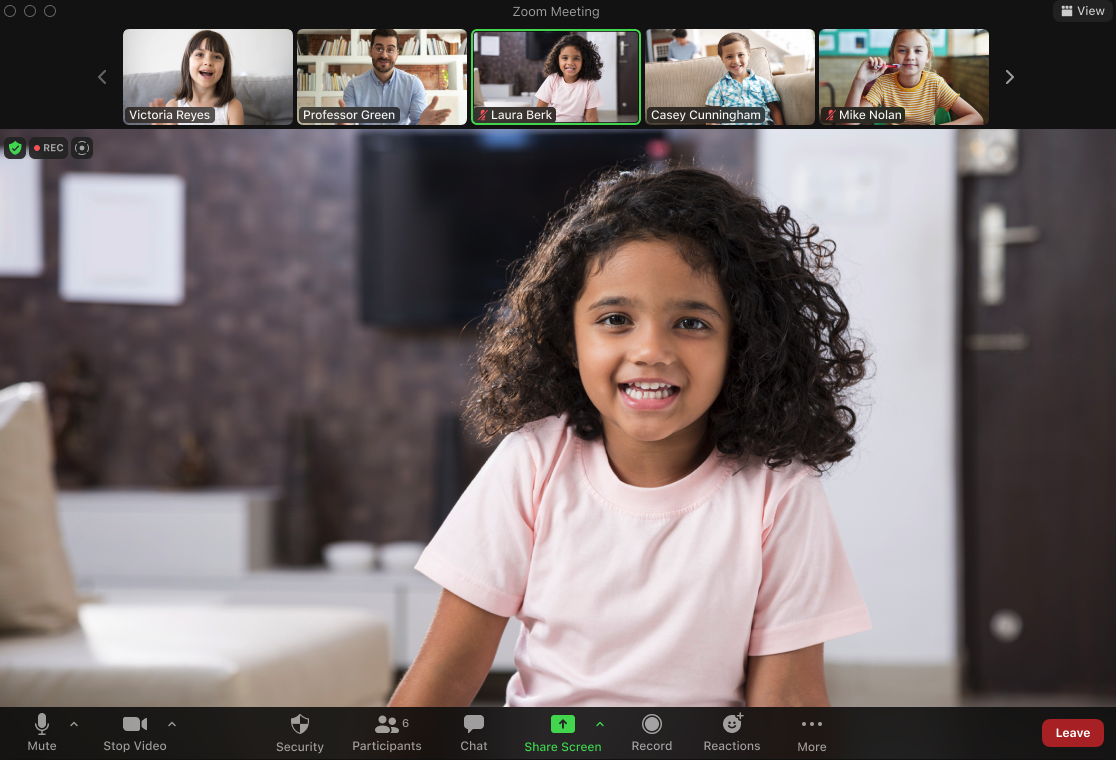
Meeting participants can still see their own video, meeting hosts and co-hosts video and the video for any participants the host chooses to spotlight. For all other participants, they can only see their names and their reactions. Focus Mode only hides the video for other participants though and they can still hear them when they are on unmute.

In addition to videos, Focus Mode also extends to screen-sharing. While hosts can see the content of all the participants’ screens when they are sharing them, participants can only see the content of their screens. Hosts can switch between each participant’s shared screen. And also make the screen-share from a particular participant available to everyone if they want to.
Enabling Focus Mode for your Zoom Account
Focus Mode is available for all types of users, free and licensed. But you have to enable it for all types of accounts from the Zoom web portal. You can enable it for all accounts in your organization or for a group of users. Individual account owners also have to enable it for their accounts.
Note: Participants will still be affected by the Focus Mode even if the option isn’t enabled for their account.
To enable Focus Mode for your account, go to zoom.us and log in with your account. Click the ‘Settings’ option from the navigation menu on the left.
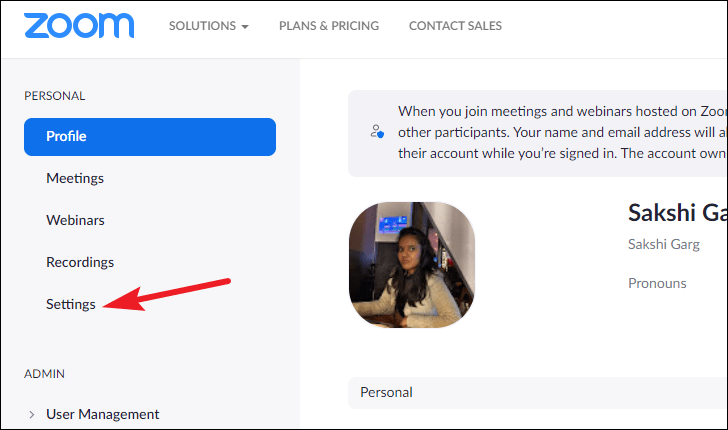
While you’re on the Meetings tab, click the ‘In Meeting (Advanced)’ option from the navigation menu.
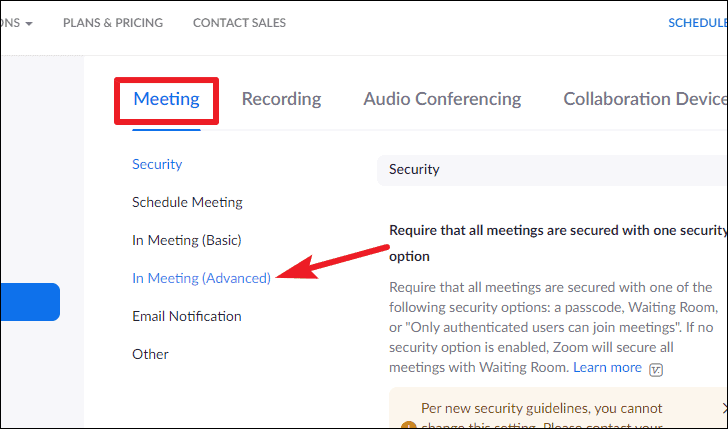
Then, scroll down until you find the option for ‘Focus Mode’. If it feels like too much scrolling, use the Ctrl + F keyboard shortcut to find Focus Mode on the webpage by entering the keywords for the same.

Turn on the toggle for ‘Focus Mode’ to enable the option for your meetings.
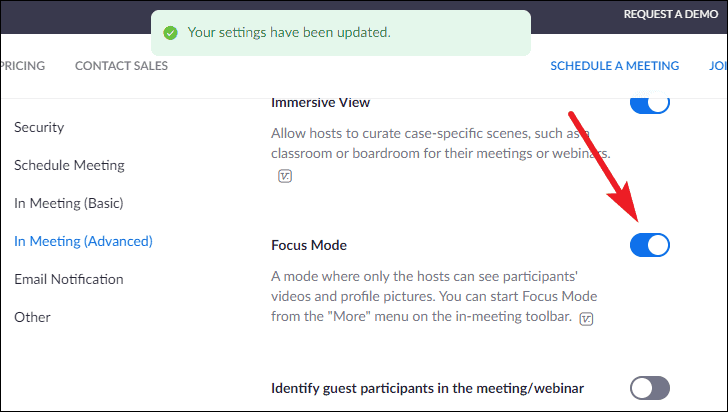
If a confirmation dialog box appears, click ‘Enable’ to confirm. The option will appear in gray if your organization has been disabled it. Contact your organization admin in this case.
Using Focus Mode in a Zoom Meeting
Once you’ve enabled Focus Mode for your Zoom account, you can start using it in meetings. But first, you must have the Zoom desktop client 5.7.3 or higher for both Windows and Mac. The feature is only available from the desktop client at the moment and not mobile apps. That is, the feature to start the Focus Mode. Focus Mode still affects the participants who are attending the meeting using the iOS or Android app.
To check the version of your desktop app, go to your profile icon. From the menu that appears, go to ‘Help’ and then click ‘About Zoom’ from the sub-menu.

You’ll b able to see your client version in the ‘About’ window.

If you need to update your desktop client, go to the profile icon again and click ‘Check for Updates’ from the menu. The latest version will download and install.
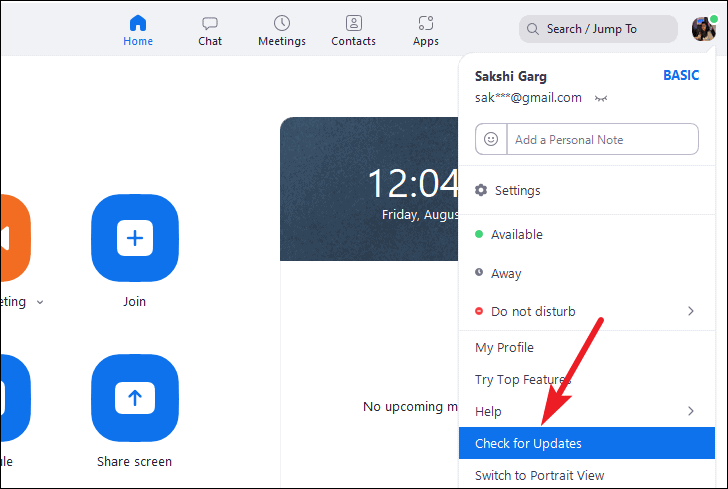
Note: Even if the meeting participants don’t have the latest desktop client, Focus Mode will still affect them. Their video will disappear for all other participants when the host enables the Focus Mode. The only difference would be that they won’t get any notifications related to Focus Mode which would appear otherwise, i.e., if they had the latest desktop app. Mobile users will get a notification when Focus Mode starts.
Now, to use Focus Mode in a meeting, join the meeting as a host. Go to the meeting toolbar and click the ‘More’ icon.
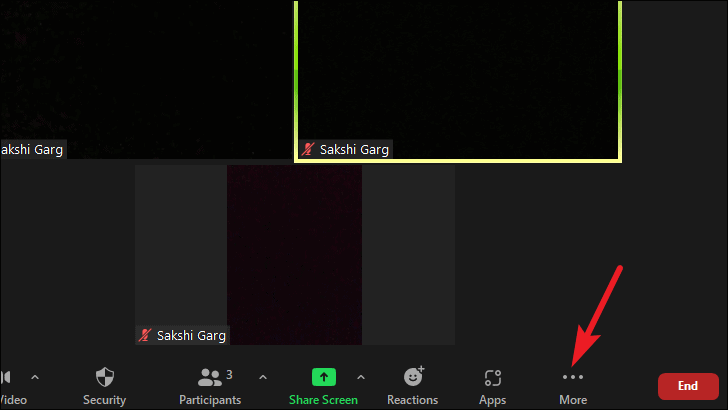
Select ‘Start Focus Mode’ from the options that appear.

A confirmation dialog box will appear. Click ‘Start’ to confirm. You can also check the option for ‘Don’t ask me again’ to skip the confirmation prompt in the future.
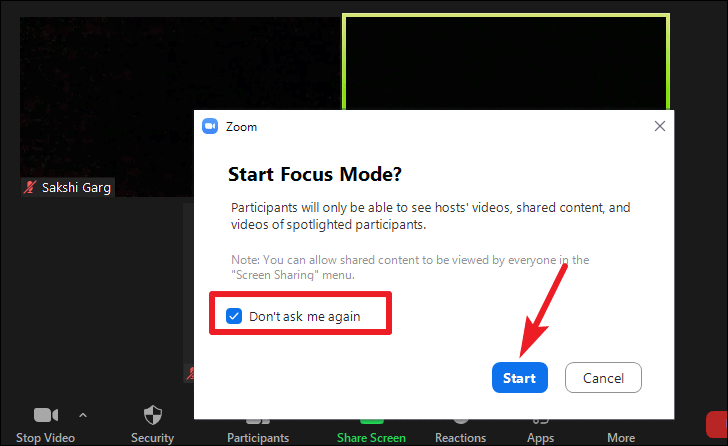
A notification banner will appear on everyone’s screen informing them that the Focus Mode is on and that videos for hosts, co-hosts, and users in the spotlight will be visible.

An icon for Focus Mode will also appear towards the top of the meeting screen for all participants when it is on.
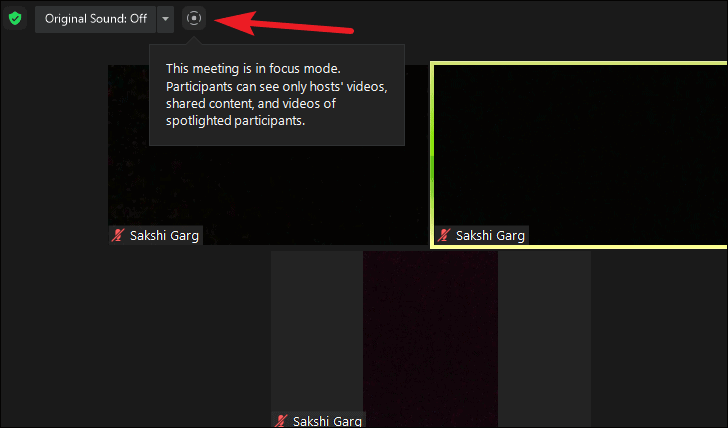
As long as the Focus Mode is on, other participants will only see the shared content that you allow and the video for hosts/ co-hosts and spotlighted participants.
To spotlight the video for a participant, go to their video tile on your screen and click the three-dot icon. Then, select ‘Spotlight for Everyone’ from the menu.

Click ‘Remove Spotlight’ from their video tile to stop their video for other participants.
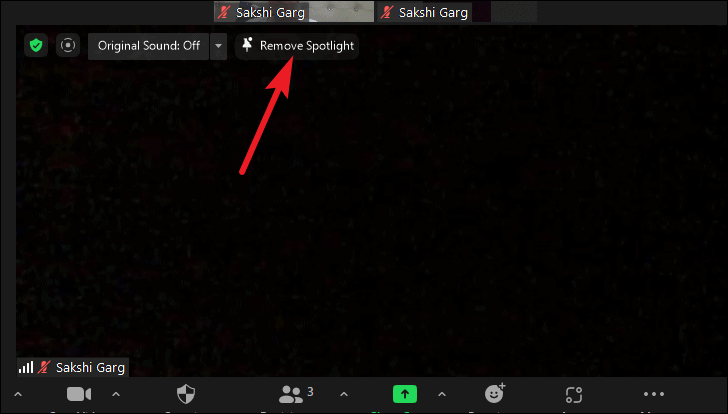
To make a participant’s screen visible to everyone during a screen-sharing session, go to the meeting toolbar and click the arrow next to the ‘Share Screen’ option.
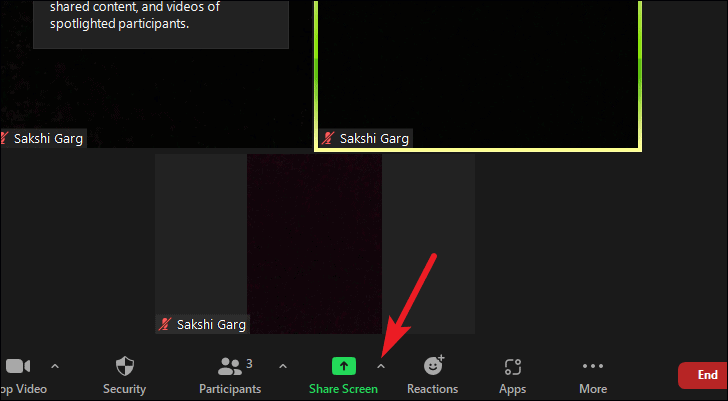
Then, select ‘All participants’ under the ‘Shared screens can be seen by’ option.
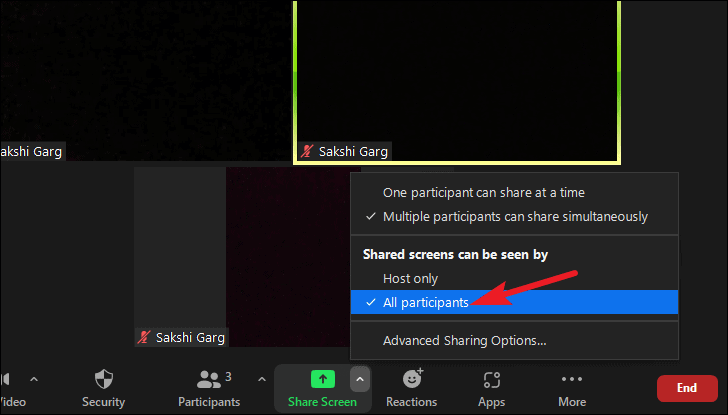
To stop everyone else other than the host and co-hosts from seeing the screen, select ‘Hosts only’.

To stop Focus Mode, go to ‘More’ and click ‘Stop Focus Mode’.

That’s all you need to know to navigate the new Focus Mode in Zoom meetings. Use the Focus Mode next time you want to prevent your meeting participants from distracting each other. Whether it’s students we’re talking about or your team members in an important presentation.

